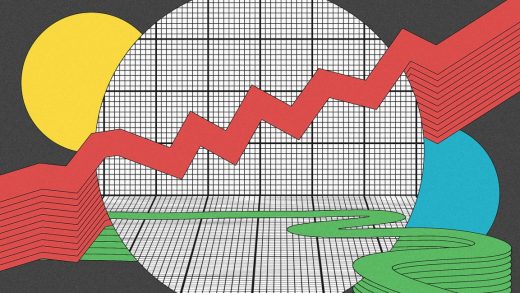It’s now been 11 years since we raised the federal minimum wage
The last time the U.S. federal minimum wage was raised was July 24, 2009. For 11 years—now the longest period without a raise in the history of the minimum wage—the federal floor for earnings has been set at $7.25 an hour, or $15,080 a year. Over the course of those 11 years, that amount has lost its buying power to inflation, even as the cost of so many necessities has risen. With the country in an economic crisis because of the COVID-19 pandemic, some employers are calling for the federal minimum wage to be increased to $15 an hour to not only help workers, but also boost struggling businesses.
“If you go back to what was the minimum wage designed to do from the very beginning and when was it enacted, it was implemented during the Great Depression in 1938, and it was really designed to put a floor under wages nationally and boost the economy by increasing consumer purchasing power,” says Holly Sklar, CEO of Business for a Fair Minimum Wage. “It always has a dual role of helping workers, so they wouldn’t be in dire poverty, and also helping businesses, so they would have people who could afford to buy their products and services. We need the same thing today.”
Business for a Fair Minimum Wage is a nationwide coalition of employers first founded in 2006. The coalition organized support for the raise passed in 2007—a three-step increase that raised the minimum wage from $5.15 to $5.85 on July 24, 2007, from $5.85 to $6.55 on July 24, 2008, and from $6.55 to $7.25 on July 24, 2009—and launched their sign on statement for a $15 federal minimum wage in 2019. (When the wage was raised in 2007, it had been 10 years since the last increase). That effort is especially crucial in this economic moment. “Businesses need customers, and workers are often customers,” Sklar says. It may seem obvious, but she says people sometimes act as if workers and customers exist in two different economies. “Our economy is 70% consumer spending. Worker paychecks [that] then turn into spending are absolutely critical . . . and the $7.25 minimum wage is so low that people were having a terrible time trying to make ends meet at that wage and somewhat above it even before the pandemic.”
Another cruel twist is that during the coronavirus crisis, many of the country’s most essential workers—grocery store employees, healthcare aides, childcare workers, cleaning staff—earn at or slightly above minimum wage. They can’t work from home, and are asked to risk their health for, often, less than $15 an hour. “Of all the times to say, ‘You don’t get a raise, you don’t deserve a raise, you just keep essentially not being able to make ends meet,’ it’s really just a crystallization of what happens when you’re not valuing people,” she says.
The benefits of a higher minimum wage have been debated, but Sklar says there’s a growing body of research showing that a higher minimum wage does not result in fewer jobs. Finance researchers at Washington University in St. Louis recently called raising the minimum wage “a mixed bag,” and said it could be detrimental to those entering the labor market specifically looking for low-wage jobs. It’s often been a concern that a higher wage acts as a disincentive to hire someone, but Sklar says this is speculative, and not backed by any evidence we’ve seen so far. Research looking at the border area between New York, which has been raising its minimum wage in phases working up to $15 an hour, and Pennsylvania, which still has a minimum wage of $7.25, found that the higher wages did not negatively impact employment.
Raising the minimum wage by just 10% could even prevent as many as 15,000 deaths in nursing homes, according to research that found that when eldercare staff earned better pay, there was less turnover, more continuity of care, more productivity, and less inspection violations.
Already, businesses across the country have signed on to Business for a Fair Minimum Wage’s call for a higher federal minimum wage of $15 an hour by 2024, including businesses such as Eileen Fisher and Dr. Bronner’s. And a higher minimum wage shouldn’t be the only federal action in this moment; Sklar says it needs to happen alongside grants for businesses and other government stimulus.
“The way we’re going to have a stronger economy coming out of this [pandemic] is if we think of it as a shared recovery, not that some people get to recover economically and others don’t,” she says. “That was the lesson of the Great Depression: coming out of it stronger than you went into it. And the way you do that is by building a shared recovery, and then the economy is stronger and more stable for the long haul.”
Correction: We’ve updated this article to make clear that the growing body of research shows that a higher minimum wage does not result in fewer jobs.
(23)



